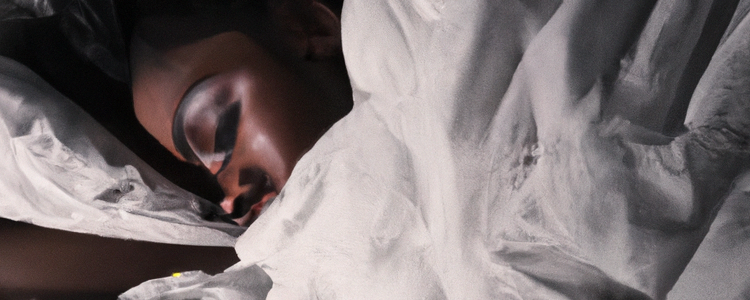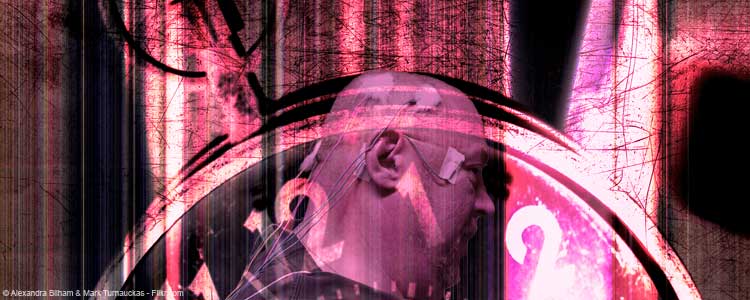Sleep opens the door to an alternate reality: the world of dreams. In dreams we replay the events of our waking lives, often with different twists and outcomes. We are also plunged into bizarre adventures. Dreams often seem to be heavy with meaning, but the meaning is difficult to decipher amidst the surrealism of dream language.
Dreams do have meaning. They speak to us from the deepest levels of our being. They give us blunt and honest information about ourselves — they are mirrors that reflect back to us how we think we’re doing in life. They tell us the truth about how we feel about ourselves and our relationships to others. They tell us what we really think about our jobs, abilities and pursuits. They invite us to ponder spiritual questions.
I have spent many years in dreamwork, and I believe especially in the profound power of dreams to heal. The healing power of dreams comes in many ways: the healing of inner wounds, the healing of setbacks, losses and griefs, the healing of self-confidence, and even the healing of the body. It’s not that dreams themselves heal, but they do contain valuable insights into how we can heal ourselves. They help us process and integrate. They help us solve problems and reduce stress. And they help us envision bold ideas.
Dreamwork in ancient times
The healing power of dreams is ancient wisdom, but wisdom that, at least in the West, was lost over time. The earliest efforts to examine the content of dreams dates back about 5000 years to the Assyrians, Sumerians, Babylonians, and Egyptians, according to extant records. The Eygptians established the foundation of what was to become oneiromancy, a Greek term for the science of interpreting dreams.
The Egyptians practiced dream incubation, or programmed dreaming. Special temples dedicated to the god of dreams and healing, Serapis, were built for this purpose. People made pilgrimages to these holy places to incubate dreams for healing and divination of the future, that is, they would ask their dreams to answer specific questions or provide specific information. First, they had to undergo rigorous rituals of cleansing, fasting, sacrificing animals and repeating incantations. They then reported their dreams to interpreters. The dreams were regarded as real, not imaginary or fantastical events, which contained valuable information for cures.
The Greeks, who were influenced by the Egyptians, also practiced this form of dream incubation, as did the Romans, who were influenced by the Greeks. Greek dream temples were dedicated to the god of healing, Asklepios. Like the Egyptians, the Greek dreamers hoped to receive special symbols associated with their god in their dreams. At Asklepios’s temples, if one dreamed of an olive tree, a serpent, a bearded man, or a handsome youth (the latter was especially associated with miraculous cures), then the dreamer would be cured. If no healing dreams were experienced, the patient was given instructions by the temple priests for receiving healing information through visions.
These techniques worked, according to testimonies inscribed on the temple walls, which probably were carved there to inspire the steady stream of dream pilgrims. All kinds of ailments and conditions were reportedly cured with the help of dreams, from chronic illnesses to blindness and lameness. Early physicians such as Hippocrates and Galen believed in the medical value of dreams. But over time, dreams lost their healing connection and became increasing associated with divination of fortune. The fathers of the Christian Church relegated dream interpretation to sorcery, and discouraged its practice.
Psychology and archetypes
Fortunately, we have restored the dream to its rightful place as a source of benefit and help. We have rediscovered the ancient dream wisdom during the last century or so, thanks to psychotherapy. Sigmund Freud considered dreams to be messages from the unconscious that expressed “day residues,” or rehashes of events in waking life, as well as repressions and unfulfilled wishes. He viewed everything in a dream as symbols that expressed unconscious wishes and fantasies that have been repressed. According to Freud, dreams essentially expressed sexual conflict.
Freud’s pupil, Carl G. Jung, went much further in his interpretation of dreams. Jung outlined a dream landscape filled with symbolic images of deep meaning, precognitive glimpses of the future, and telepathic communication. Jung believed that dreams are filled with symbols that have both personal meaning and archetypal meaning. Archetypes are ageless, and are universally recognized in certain symbols and motifs that show up in myth, religion, and fairy tales. Jung called them “primordial images” and “self-portraits of the instincts.” An archetypal dream symbol has a larger-than-mundane-life significance.
Jung saw dreams as tools for individuation, which is a process of integration of all parts of the psyche, a striving towards wholeness. According to Jung, all these parts of the psyche show themselves in dream, indicating where a person needs to apply attention.
Besides helping us on a psychic wholeness level, dreams also are involved with our physical well-being. Jung noticed this as well. Some of his patients reported dreams that presaged or dealt with severe illness. More recently, dream researchers have documented how dreams contain crucial information about our health, warning us of illness and providing help in healing.
Dreamwork today
In order to derive maximum benefit from your dreams, it is essential to begin a regular habit of dreamworking. This can be undertaken alone or in a group. It is often helpful to work with someone, but even alone a dreamworker can gain valuable insight in dreams with the help of dreamwork books.
It is important to record all dreams in as much detail as possible. Dreams are ephemeral, and easily slip from memory after awakening. Immediately upon awakening, write or record everything you call recall. Leave nothing out, no matter how bizarre or trivial it may seem. Every piece or symbol in a dream has meaning, and more subtle meanings reveal themselves upon reflection, meditation, or even over time. Such things as colors and numbers have significance, too. Colors are associated with various states of consciousness, emotion and even physical health, while numbers often have associations to time periods, as well as to archetypal meanings. After a period of time, you will probably notice patterns appearing in your dreams. These often revolve around unresolved issues or feelings, and your dreams are seeking to call your attention to the matter.
If you have trouble recalling your dreams, there are techniques to help. Telling yourself at bedtime that you will remember your dreams does work, although it may take a while to take hold. Remaining in bed and concentrating on the wisps of dreams also helps. Once we get up and enter full waking consciousness and the activities of the day, it becomes much harder to retrieve dream information.
It is not unusual to go through cycles in dreaming—periods when it is difficult to recall dreams, and periods in which dreams are vivid and easy to recall. Simply beginning regular dreamwork with a journal is an invitation to your dreaming self to step forward, and the dreamwork becomes easier with time.
Once you have recalled your dreams, then how to interpret them? Numerous techniques can help you understand your dreams and learn your own personal symbols dictionary—personal meanings associated with dream images that pertain to your unique experiences and perspective in life. Many dreams have at least some archetypal symbols in them as well.
Dreamwork does not stop with interpretation. The healing power of a dream can only be fully realized when action is taken. Dreams tell us what we need to change in life, and provide us with help in how to make those changes. Action can be as simple as acknowledging something about yourself. Or, it may be changing an attitude, or even a course or direction in life.
Your dreams are one of your richest sources for guidance and healing. Once you begin tapping into their power, you can put this wisdom to use in daily life for greater happiness, fulfillment and personal growth.








There are no comments for this post yet.
Be the first to comment. Click here.